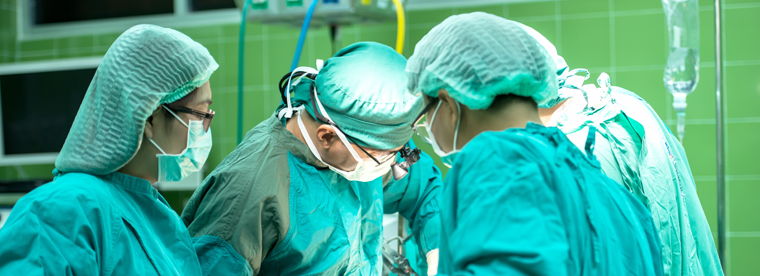In response to limited data comparing different types of hysteropexy procedures, researchers at MedStar Washington Hospital Center and Georgetown University collaborated to publish “Vaginal and Laparoscopic Mesh Hysteropexy for Uterovaginal Prolapse: A Parallel Cohort Study.” Published in the American Journal of Obstetrics and Gynecology, this multicenter study compared the 1-year efficacy and safety of laparoscopic sacral hysteropexy versus vaginal hysteropexy.
A hysteropexy is performed to correct prolapse of the uterus. Uterine prolapse occurs when the uterus sags or slips from its normal position due to weakened or ineffective muscles or ligaments. The majority of prolapse repairs are performed with a hysterectomy, even though the uterus is not the cause of the prolapse. Interest in uterine conservation has been increasing for a variety of reasons, including sexual function, sense of identity, fear of complications and preservation of future fertility. Hysteropexy procedures can be done with native tissue or synthetic mesh. In this study, two different minimally invasive surgical procedures were performed utilizing synthetic mesh to lift the uterus. Both procedures were laproscopic (i.e., performed through keyhole surgery).
The study included women, ages 35-80, who desired uterine conservation, were not planning to have children in the future and were undergoing one of the two procedures for stage 2-4 symptomatic anterior/apical uterovaginal prolapse. Of the patients, 74 received a laparoscopic sacral hysteropexy and 76 received vaginal mesh hysteropexy.
No differences in blood loss, complications, or hospital stay were found for patients in either cohort. One-year outcomes showed consistent results between the cohorts, with 95% of patients in each group “very much better” or “much better.” Pelvic floor symptom and sexual function scores improved for both groups.
“Laparoscopic sacral hysteropexy and vaginal mesh hysteropexy had similar 1-year cure rates and high satisfaction,” the authors said.
This research was led by Robert E. Gutman, MD, and was presented as a late-breaking abstract awarded Best Surgical Paper at the 2015 annual meeting of the American Urogynecologic Society. It was also a featured article on the American Journal of Obstetrics and Gynecology website.
Collaborators on this research were from the Alpert Medical School of Brown University/Women & Infants Hospital of Rhode Island, Stanford University School of Medicine, University of North Carolina, University of British Columbia, Christ Hospital/University of Cincinnati, Greater Baltimore Medical Center, and Cleveland Clinic.
American Journal of Obstetrics and Gynecology, DOI: 10.1016/j.ajog.2016.08.035

